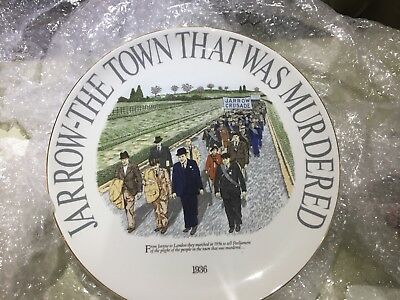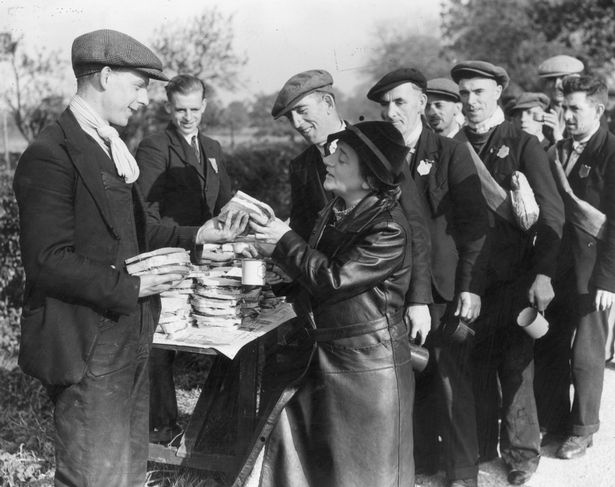Claude Robinson (b.1898) – Politics and Protest: the Jarrow Crusade Part 1
‘The historical importance of the unemployment in Jarrow, unlike that which swept the world after the Wall Street collapse in 1929, consists in the fact that it was specific and unmistakeable, both in its causes and its remedy’ (pg.75) Robinson, C. (1982) These We Have Loved
In my previous post, War and Memory, I explored the poverty and unemployment that Jarrow endured in 1930s as it was sandwiched between the long-lasting impact of the first war and the impending carnage of the second. The dire conditions in Jarrow were distantly connected to the financial tremors of the first world war, however these tremors were by no means the only cause for Jarrow’s troubles. Throughout this memoir, Robinson has looked to expose signs of corruption whenever the chance presents itself, evident in his consistent condemnation of the town’s council and educational Board of Directors over their incompetent treatment of Jarrow School, and his dismay at the town’s poverty is no outlier in terms of criticism from the author. He does go onto explain in detail the reasons and solutions to Jarrow’s horrendous poverty and rate of unemployment but before he does this, he mentions a book of the name The Town That Was Murdered (1939) by MP Ellen Wilkinson, saying that the topic ‘has been dealt in a very full and exceptional way’ by Wilkinson. This book is an excellent insight into the problems that forced the Jarrow Crusade to happen in 1936, as well as the event itself, and I have no doubt that Robinson recommended it to the reader so that they can become more acquainted with this infamous part of Jarrow’s history from a good historical source (although later in the memoir he criticises some of her political views on employment). Wilkinson was a part of the march too and so it interesting to imagine her interactions with Claude if there were any! As has been mentioned in prior posts, Claude Robinson was a big part of this show of resistance and for this reason, my final two blog posts will be dedicated to this defining moment in Robinson’s life.

The Jarrow Crusade consisted of 200 men marching on a 300-mile journey from Jarrow to London, demanding that the people of the south, particularly Parliament, see that they were a hard-working group of people who were constrained by the poor conditions of their town. The employment rate of Jarrow reached as high as 70% and the townsfolk were forced to take a stand. A large reason for this severely high unemployment rate was the closure of Palmer’s shipyard in 1935, a huge source of employment for the town (in my previous post, we discovered that Robinson’s father benefited greatly from its industry during and after the first world war). With the shipyard gone, the workers demanded that a steel works be built to compensate for its absence, and even this would not offset the damage of losing huge industrial and financial boon like Palmer’s, but it would be a start. Robinson highlights the sheer loss that Palmer’s closing caused Jarrow:
‘The closing of Palmer’s yard meant 80% of the people became unemployed…who had worked all their lives in Palmer’s yard were not trained for any other trade.’ (pg.79) Robinson, C. These We Have Loved
Although, Robinson says that Palmers ‘was as good as closed’ in 1931, its official closure in 1935 was the last omen for a town in the deepest kind of depression. And so the crusade began within the Roman Catholic Church of St. Bede, where the Bishop of Jarrow ‘wished them godspeed on their distant pilgrimage to London’. Robinson is uncharacteristically poetic in how he portrays London in eyes of the men who were marching towards it, ‘as distant as stars in the Milky Way’ (pg.100). This daunting journey, an almost biblical homage to the working class, had to happen; as Ellen Wilkinson in The Town That Was Murdered (1939) puts it ‘there was no work’ and people were dying from ‘bad houses’ and ‘too little food’. The town had to act urgently as if it were at the risk of extinction, the low mortality rate certainly gave that impression, and so the Jarrow Crusade, with Claude Robinson fully committed, began…

Bibliography
Robinson, C. (1982) These We Have Loved
Wilkinson, E. (1939) The Town That Was Murdered

Leave a Reply